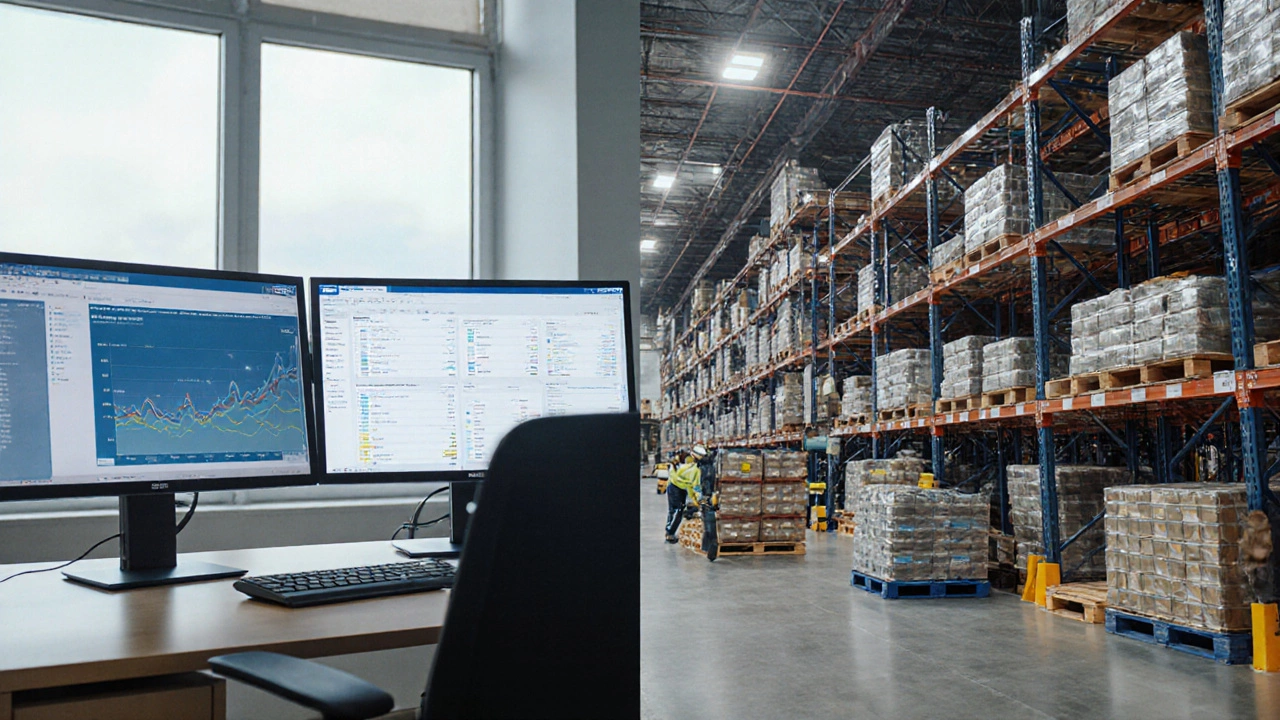SAP for Logistics: How It Helps Your Supply Chain Run Smoothly
If you run a warehouse, a delivery fleet, or any part of a supply chain, you’ve probably heard the name SAP tossed around. It’s not just a fancy buzzword – it’s a set of tools that can make daily work easier, faster, and more reliable. In this guide we’ll break down what SAP does for logistics, why you might need it, and how to get started without getting lost in tech jargon.
Why SAP Makes Sense for Logistics
First off, SAP gives you a single place to see everything that’s happening – from stock levels in the yard to trucks on the road. When you can view orders, inventory, and shipments together, you spot problems before they become emergencies. For example, if a product is running low in a regional hub, SAP can alert you so you reorder in time, avoiding costly stock‑outs.
Second, SAP automates routine tasks. Instead of manually entering a delivery note into three different systems, SAP can pull the data once and push it where it needs to go. That cuts down on human error and saves the time you’d spend double‑checking spreadsheets.
Finally, SAP talks to other software you already use. Whether it’s a transport management system (TMS) or a warehouse management solution (WMS), SAP’s integration capabilities let data flow freely. The result is a more connected supply chain that reacts quickly to changes in demand or traffic.
Getting Started with SAP in Your Business
1. Identify the pain points. Write down the biggest headaches you face – missed deliveries, inventory mismatches, or slow invoice processing. Knowing what you want to fix helps you pick the right SAP modules.
2. Pick a scalable package. SAP offers cloud‑based options that grow with you. If you’re a small e‑commerce brand, start with SAP Business One; larger enterprises might look at SAP S/4HANA.
3. Map your processes. Before you click ‘go live,’ sketch out how orders move from your website to the warehouse, then to the customer. This map shows where SAP will fit and where you may need to adjust existing steps.
4. Train the team. Even the best software fails if people don’t know how to use it. Run short, hands‑on workshops that focus on the everyday tasks employees will do in SAP.
5. Measure and tweak. After the first month, compare the numbers you tracked in step 1. Did order‑to‑delivery time drop? Did inventory accuracy improve? Use those insights to fine‑tune settings or add new modules.
Remember, you don’t have to implement everything at once. Start with the module that solves your biggest issue, then expand as you see results.
In a nutshell, SAP can turn a chaotic logistics operation into a well‑orchestrated system. It gives you real‑time visibility, reduces manual work, and makes it easy to link up with other tools. If you’re ready to stop guessing and start controlling every step of your supply chain, exploring SAP is a solid next move.
SAP ERP vs WMS: What It Really Is
Explore whether SAP functions as an ERP, a WMS, or both, and learn how to choose the right SAP solution for warehouse operations.
Read MoreSAP in Warehousing: Meaning, Role, and Real Benefits Explained
What does SAP stand for in warehousing? Find out what SAP means, how it works in warehouses, and why it's a game-changer for logistics teams worldwide.
Read MoreSAP in Logistics: Making Complex Supply Chains Simple
SAP in logistics isn’t just a tool; it’s the backbone for companies wanting smooth, reliable supply chains. This article digs into how SAP keeps warehouses humming, trucks moving, and data under control, making headaches like missing parts or late shipments less common. You’ll get the details on how it works, why it matters, and practical tips if you’re looking to switch or upgrade. We’ll cover the basics, real examples, and a few tricks to get SAP working harder for your business. If you’ve ever wondered how big brands seem to keep things running (even when surprises hit), SAP probably plays a big part.
Read MoreDoes SAP Do Warehouse Management? Everything You Need to Know
Curious if SAP can handle your warehouse management? This article breaks down what SAP offers, how its warehouse management tools stack up, and whether it's the right fit for modern logistics. We'll go over real features, pros and cons, and tips for getting started. Perfect if you're considering an upgrade or just wondering what SAP can actually do for your warehouse.
Read MoreExploring Amazon's Use of SAP in Warehouse Management Today
Amazon has continually evolved its technology stack to optimize operations, especially in warehouse management. For a while, the collaboration with SAP formed a cornerstone of its strategy. Now in 2025, there's curiosity about whether this collaboration has stayed intact. We delve into how Amazon integrates SAP, other software influences, and how it shapes the e-commerce giant's logistics landscape.
Read MoreUnderstanding SAP: Warehouse Solutions Simplified
In the realm of warehouse solutions, SAP stands as a prominent acronym that often sparks curiosity. As the world of logistics evolves, understanding what SAP offers becomes crucial for seamless operations. This article delves into the multifaceted world of SAP, highlighting its role in efficient inventory management and the overall logistics framework. We'll explore common misconceptions and provide insightful tips for leveraging SAP effectively within warehouse operations.
Read More




